
HOW TO CHOOSE THE RIGHT PLANE FOR YOUR CHARTER FLIGHT
TYPES OF PRIVATE PLANES EXPLAINED
Piston Engine Air Taxis
Single Piston Propeller Planes
- Power: Single piston engine
- Maximum altitude: 15,000 ft
- Maximum range: 300-400 miles
- Passengers: 2-6
- Advantages:
- Cost-effective
- Consumes less fuel
- Small enough to land in any airport with short runways
- Greater useful load than twin engine planes
- Disadvantages:
- Longer flights may require refueling
- Tight cabin space
- Noisy interior
Double Piston Propeller Planes
- Power: Twin piston engine
- Altitude ceiling: 15,000 ft
- Maximum range: 400-920 miles
- Passengers: 2-6
- Advantages:
- Two engines should one fail
- More powerful
- Faster takeoff
- Disadvantages:
- Higher operating costs
- Increased engine weight means decreased useful load
Turboprops
Turboprops are lighter than jets but more substantial than piston engine aircraft.
Considered the most flexible plane in the sky, turboprop airplanes use one or more gas-turbine engines to create the energy needed to turn the propellers, moving the plane off the ground and through the sky.
- Power: Turbine propeller engine
- Altitude ceiling: 35,000 ft
- Maximum range: 1,000-3,000 miles
- Passengers: 6-8
- Advantages:
- Great useful load than in piston engine planes
- Greater fuel efficiency than a jet
- Quiet interior
- Many offer a luxurious cabin space
- Can land in most general aviation airports and even on grass fields or gravel runways
- For short flights, an economical alternative to a jet
- Disadvantages:
- Low altitude flying which can mean turbulence
- Slower cruising speed than a jet
- Less efficient and cost-effective at higher speeds
Jets
While the propellers on piston engine planes and turboprops are visible on the outside of the plane, jet engines, or gas turbines, house their fan blades within the engine.
- Power: Turbofan jets
- Altitude ceiling: 41,000-45,000 ft
- Maximum range: 1,000-74,000 miles
- Passengers: 6-19
- Advantages:
- Faster and quieter than piston engine and turboprop planes
- Longer range
- High altitude flying means less turbulence and greater passenger comfort
- Cost-effective and fuel-efficient at long distances
- Many types of jets for different needs.
- Disadvantages:
- Less efficient and cost-effective at shorter distances
- Expensive to charter
- Require longer, paved runways
EXAMPLE PERFORMANCE OF EACH PLANE CLASS
Single Piston Engine Propeller Planes
Standard Air Taxis
Single piston engine planes are often used as air taxis because they are small, lightweight, and affordable.
Today’s single engine propeller planes are remarkably safe. Engine failure in any plane is extremely rare, and because single engine planes generally fly at low altitudes for short distances, they are nearly always in place for safe emergency landings.
Performance details: (Numbers are an approximation)
- Speed: 200 mph
- Range: 920 nautical miles (nm)
- Passengers: 4-6 passengers
- Useful load: 1,100 lbs
- Cabin height: 4 ft
- Storage space: 10 cu ft
- Cost-per-hour: $120 – $180 per flying hour
Examples of single piston engine propeller planes: Beechcraft Bonanza, Cessna 172 Skyhawk, Mooney M20, and Piper Cherokee.
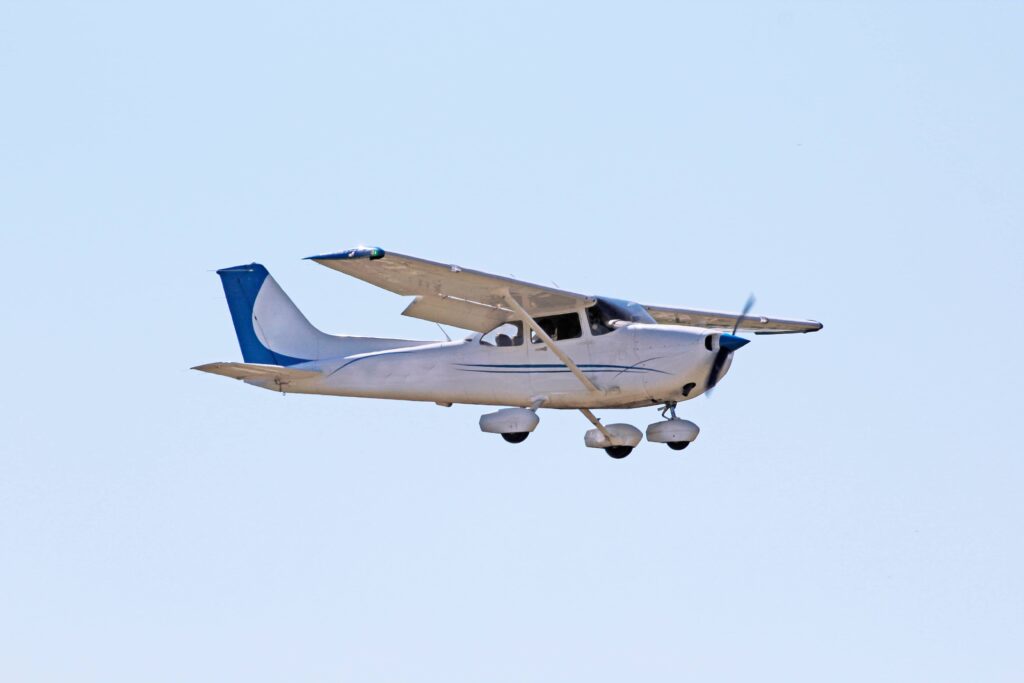
Light Single Piston Engine Propeller Planes
Premium Air Taxis
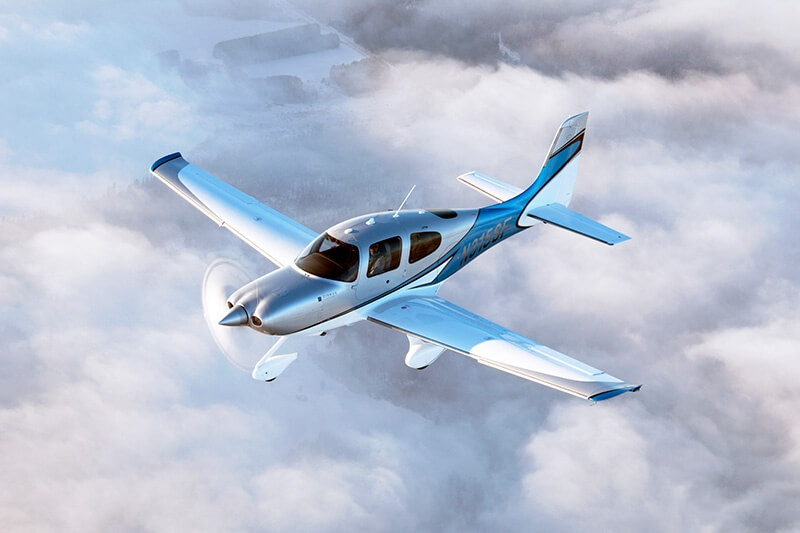
The small size of the luxury single engine plane means they can land most anywhere, making them perfect for reaching remote locations.
Performance details: (Numbers are an approximation)
- Speed: 200 mph
- Range: 1,050 miles
- Passengers: 4-6 passengers
- Useful load: 2,025 lbs
- Cabin height: 4 ft
- Storage space: 32 cu ft
- Cost-per-hour: $500 – $2500 per flying hour
Example of a single engine plane: Cirrus SR-22
Midsize Single Piston Engine Propeller Planes
Midsize Air Taxis
Single engine planes offer surprisingly smooth rides considering their size. Because of their low operating costs, midsize propeller planes are the most common types of planes.
Performance Details: (Numbers are approximate)
- Speed: 211 mph
- Range: 1,050 miles
- Passengers: 4-6 passengers
- Useful load: 2,025 lbs
- Cabin height: 3.5 ft
- Storage space: 32 cu ft
- Cost-per-hour: $2000 – $3100 per flying hour
Examples of midsize single engine propeller planes include: Piper Aztec, Cessna 310, Piper Seneca, Beechcraft Baron (Numbers are an approximation)
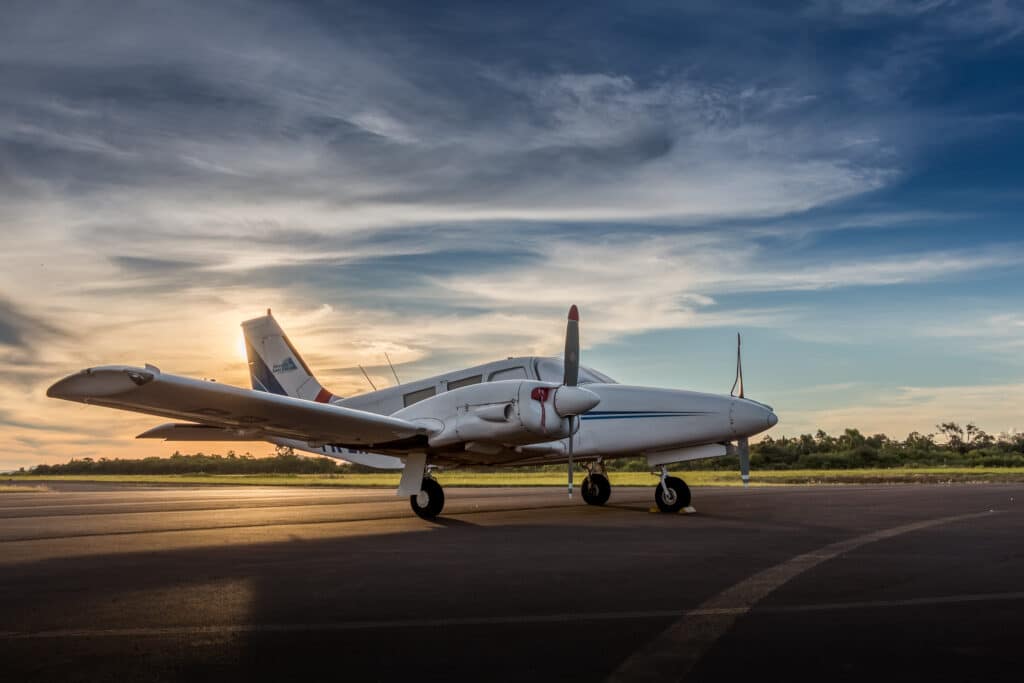
Large Twin Engine Propeller Planes
Premium Air Taxis
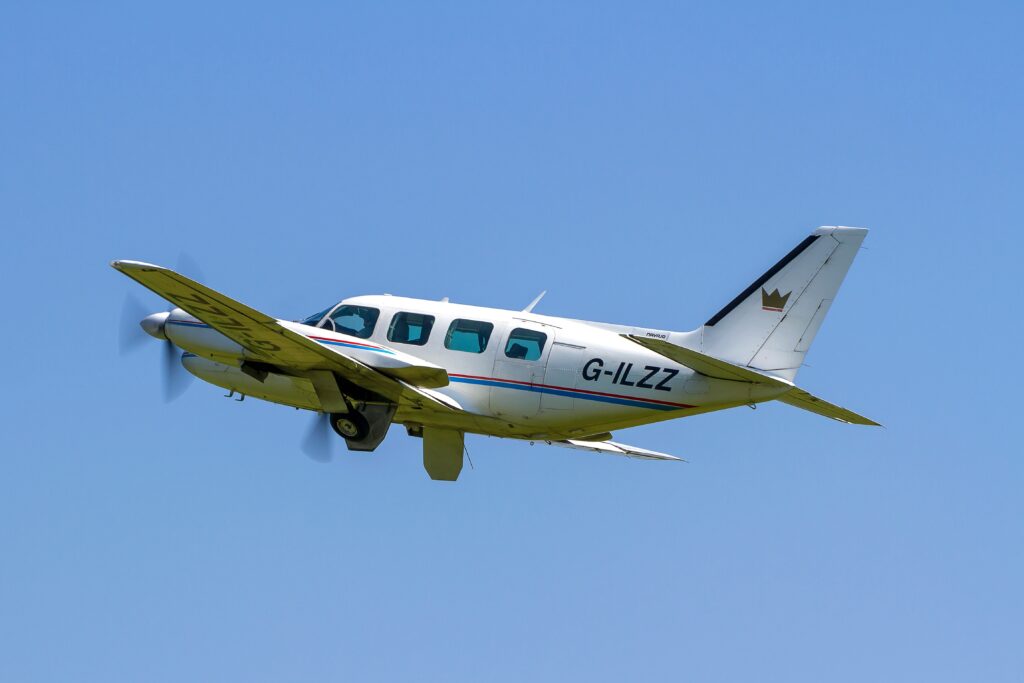
Twin engine planes pack in twice the power, and therefore have faster pickup, fly at greater speeds, and have an increased useful load.
These desirable planes are still small enough to land on shorter airstrips, which means you can jet off to a secluded island or rural location in comfort.
Performance Details: (Numbers are an approximation)
- Speed: 200 mph
- Range: 2200 miles
- Passengers: 4-9
- Useful load: 715 lbs
- Cabin height: 3.5 ft
- Storage space: 32 cu ft
- Cost-per-hour: $2000 – $3000 per flying hour.
Examples of large twin engine propeller planes include: Piper Navajo, Cessna 402, Piper Chieftain, Beechcraft Queen Air.
Premium Air Taxis
Turboprops
With similar amenities and storage space as their jet counterparts, twin engine turboprop planes are an economic alternative for those seeking a versatile plane to comfortably take them up to 500 miles away.
Turboprops can also access short – even unpaved – runways, making them ideal for reaching destinations off the beaten track.
Performance Details: (Numbers are an approximation)
- Speed: 200 mph
- Range: 2106 miles
- Passengers: 4-8
- Useful load: 714 lbs
- Cabin height: 5 ft
- Storage space: 90 cu ft
- Cost-per-hour: $2000 – $2800 per flying hour
Examples of twin engine turboprop planes: Cessna Caravan, Beechcraft King Air.
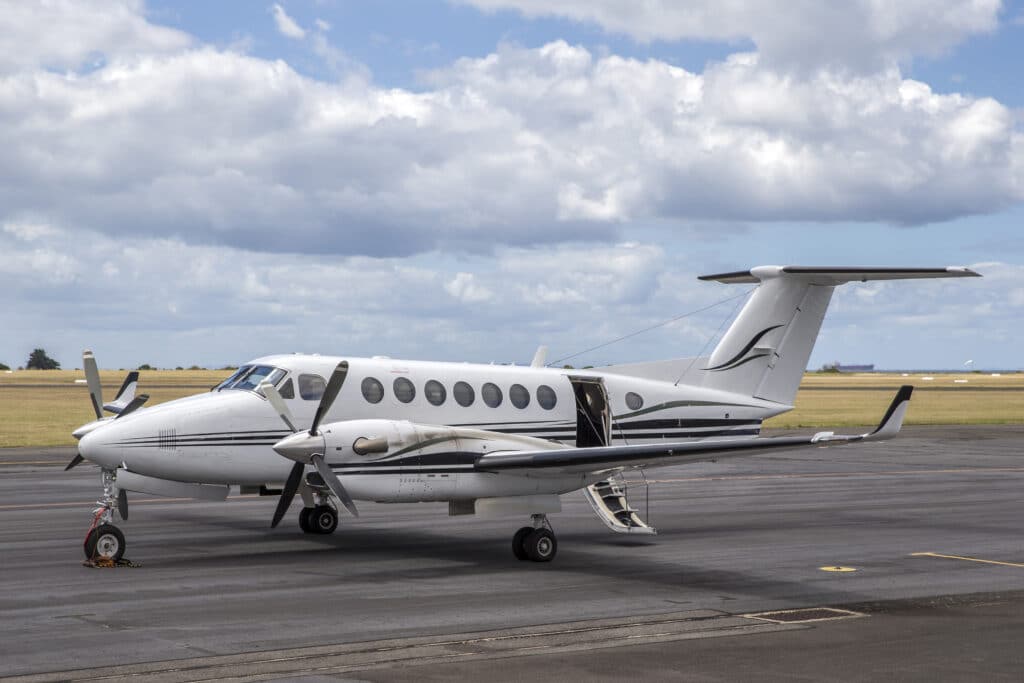
Very Light Jets
Personal Jets
Very light jets are most commonly used for business travel. These entry-level jets are fast, sleek, compact, and can carry significantly more weight than piston engines and turboprops. They cruise at nearly double the speed of their turboprop cousins and have a markedly wide range; yet, they are small enough to land in most any airfield.
Performance Details: (Numbers are an approximation)
- Speed: 500 mph
- Range: 1100 – 1300 miles
- Passengers: 4-5
- Useful load: 3810
- Cabin height: 4.6 ft
- Storage space: 44 – 74 cu ft
- Cost-per-hour: $2,000 – $4,000 per flying hour
Examples of very light private jets include: Eclipse, Embraer Phenom, Citation Mustang
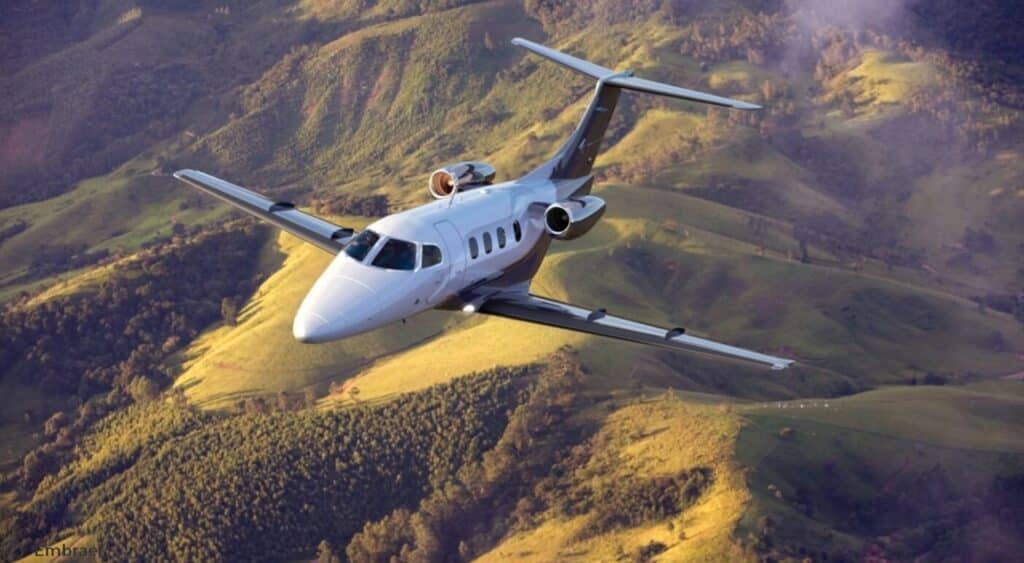
Light Jets
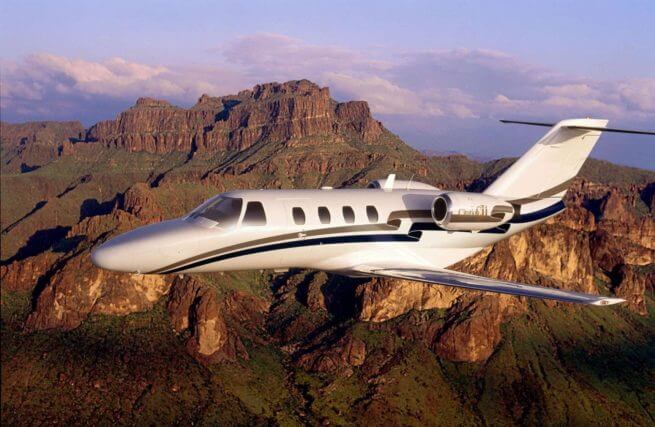
Light jets provide a slight step up in comfort and amenities from their very light counterparts. For instance, many light private jets are equipped with a lavatory, while very light jets offer curtained-off toilets or forego access to bathroom facilities completely.
They are ideal executive travel planes and are perfect for longer, non-stop trips. Amenities may include a sleeping area, a galley kitchen, private lavatory, and entertainment systems.
Their ample storage space makes them perfect for groups heading on skiing or golfing excursions.
Performance Details: (Numbers are an approximation)
- Speed: 475-520 mph
- Range: 2,000 miles
- Passengers: 6-9
- Useful load: 3810
- Cabin height: 5.5 ft
- Storage space: 196 cu ft
- Cost-per-hour: $2,900 – $5,800 per flying hour
Examples of light private jets include: Citation CJ, Embraer Phenom 300, Beechcraft Beechjet, Hondajet
Midsize Jets
Midsize private jets provide a comfortable, modern workspace.
They only require a runway distance between 5,000 and 6,000 feet and can land in most regional and international airports.
Performance Details: (Numbers are an approximation)
- Speed: 527 mph
- Range: 6,500-7,500 miles
- Passengers: 8-13
- Useful load: 1,400 lbs
- Cabin height: 6 ft
- Storage space: 195 cu ft
- Cost-per-hour: $4000- $9000 per flying hour
Examples of midsize jet taxis include: Hawker 4000, Cessna Citation X, Dassault Falcon 50, Bombardier Learjet 55
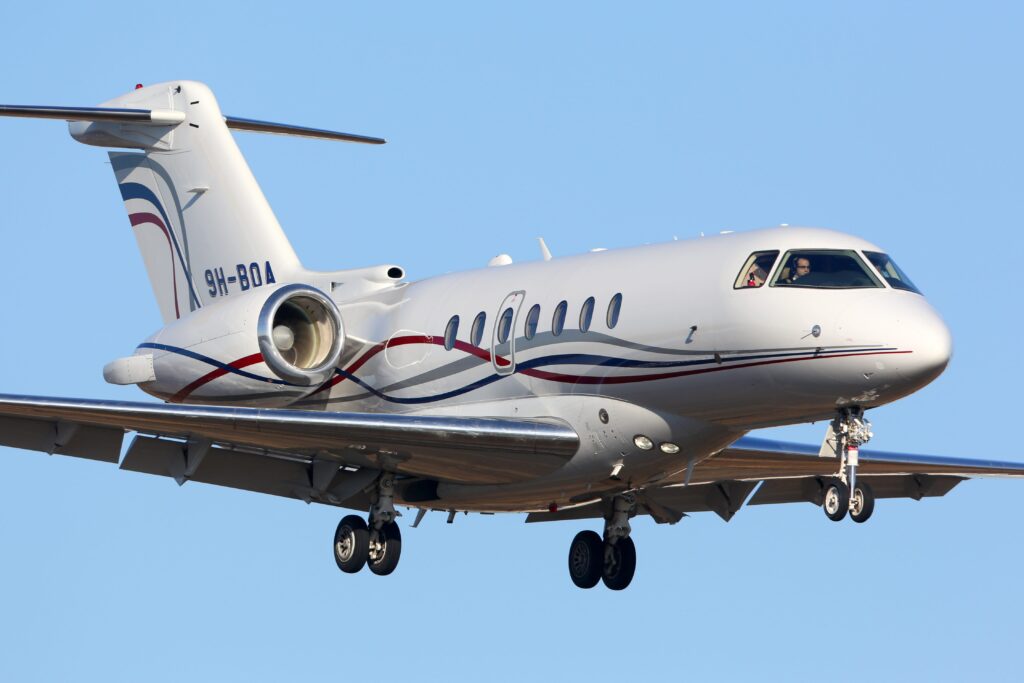
Large Jets
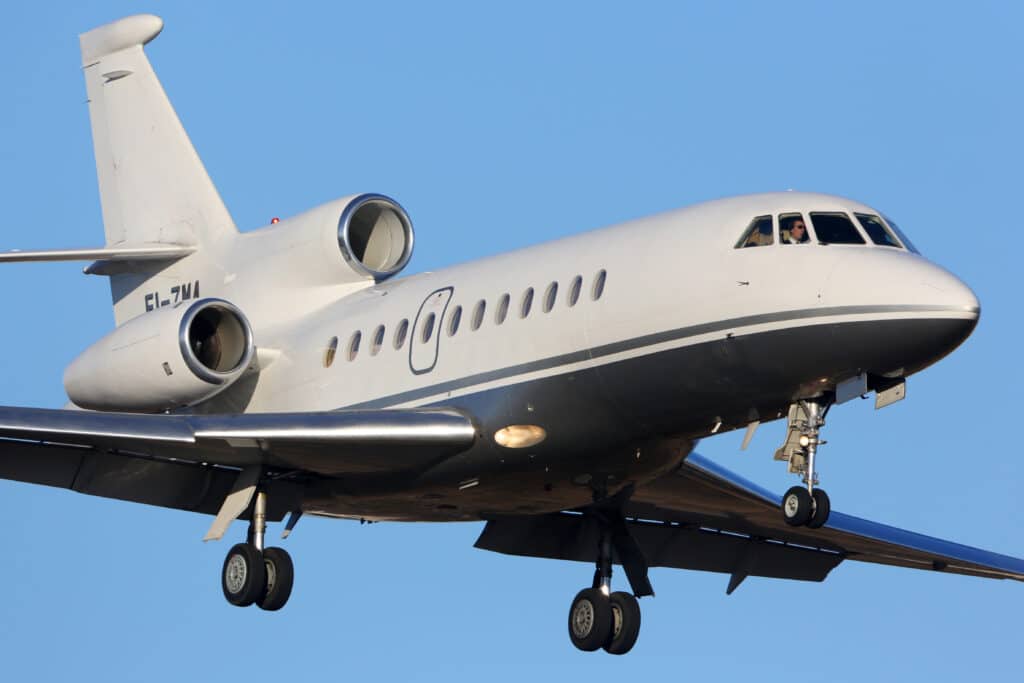
Midsize private jets provide a comfortable, modern workspace.
They only require a runway distance between 5,000 and 6,000 feet and can land in most regional and international airports.
Performance Details: (Numbers are an approximation)
- Speed: 527 mph
- Range: 6,500-7,500 miles
- Passengers: 8-13
- Useful load: 1,400 lbs
- Cabin height: 6 ft
- Storage space: 195 cu ft
- Cost-per-hour: $4000- $9000 per flying hour
Examples of midsize jet taxis include: Hawker 4000, Cessna Citation X, Dassault Falcon 50, Bombardier Learjet 55
CHOOSING THE RIGHT PLANE
The three main types of private planes used for charter flights are classified by their engine types: piston-engine, turboprops, and jets.
We will offer you options to match your number of passengers and desired itinerary.
Your choices for aircraft type will depend on the distance of your flight and runway length at your chosen airports. We will offer you aircraft that can meet your trip per your requirements – so you don’t need to do the research and calculations yourself.
If your flight requirements differ substantially based on number/combined weight of passengers, standard luggage, and flight distance, you will likely find the guide below to be helpful.
There are several factors to consider when choosing the right aircraft: The route and distance of the flight, the number and combined weight of the passengers, the type and weight of the baggage, your budget, and the personal needs of the passengers.
- Weight: Your pilot will need the total combined weight of all the passengers and luggage. Each plane has a maximum useful load, which includes the weight of the pilots, passengers, baggage, and fuel. Weight has a considerable impact on the safety and integrity of the aircraft; it affects the plane’s speed, maneuverability, and balance.
- Storage: Have boxes of materials to distribute at a conference or a few sets of golf clubs? Be mindful of their weight and how much room you need to transport them. Ask if the plane can accommodate large, awkward belongings like skis, strollers, golf bags, or musical instruments.
- Passenger comfort factors:
- Is there a separate, private lavatory?
- Are there food and/or drinks on board?
- How close can the plane get to the final destination?
- How much personal space does each passenger require?
- Will there be a flight attendant on board?
- Will the plane be quiet enough to hold a meeting while in the air?
- Budget: Finally, your budget must be taken into consideration. A large private jet with comfortable, luxurious cabins, catering, and ample storage is going to be considerably more expensive than the economical turboprop.

